I guide and hunt many African Cape Buffalo. I’ve been lucky to experience some of the best buffalo hunting grounds in Africa. Every hunt is special and no two the same. I grew up hunting old animals and instinctively judge game on wear and tear, before size. Nothing like taking an old animal and working for it. They rarely come easy. As the saying goes – only the clever get old!

A good buff is an old buff – no two ways about it! A professional hunter should easily judge age
from the boss, horn-tips and other factors such as body development, penis
sheath, testicles, posture, condition etc.
An important part of Buffalo hunting is getting as close as possible to make
clear judgment and have a clear shot.
The thrill is in the chase and skill in the approach.
It is important to assess the animal from the sides and the front, as angles
play tricks on all of us. A fully
developed boss is a clearly visible feature on a bull and if you are familiar
with Cape Buffalo, easy to determine. Some are older than others, but the key
is to avoid taking buffalo with a soft boss, as they are certainly too young
and are soon to become breeding bulls. A
fully developed (hard) boss does not justify taking a buffalo. It is merely a sign of a fully mature bull.
It
is from this point a bull begins to assert his status within a herd and fight
for breeding rights. A good bull is one
that is two or more years past his maturity, normally 8-10 years of age and
soon passing his peak as a breeding bull.
His boss will show signs of wear and tear and will be solid and
worn. Depending on its’ genetics, there
may be signs of secondary growth of horn, which is usually in the form of
raised bosses or step-like extension between the bosses.
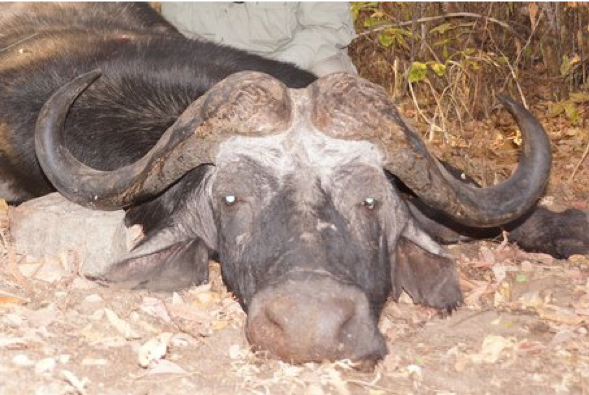
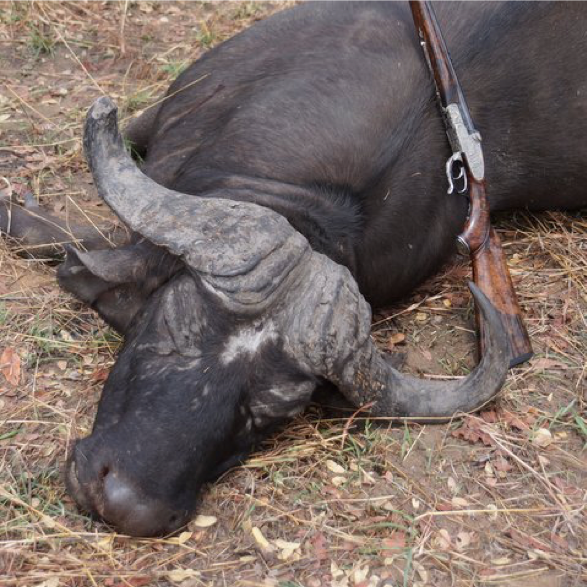
The ideal bull is even older. Over 10 years and past prime breeding. This does not suggest they cannot breed. They are just too old to compete with younger herd bulls and not interested in the wanderings of a herd anymore. Even if seen without a herd, it does not mean they are not part of one. It is common for older and younger bulls to leave and rejoin breeding herds for a number of factors, including weather patterns, breeding seasons and from being continuously hunted by predators, including man. Herd dispersal and stampedes also cause separation. A very common mistake by hunters is an assumption that solitary bulls (Dagga Boys) are old bulls. Always get close and observe the age indicators. My best buffaloes earned status from age.
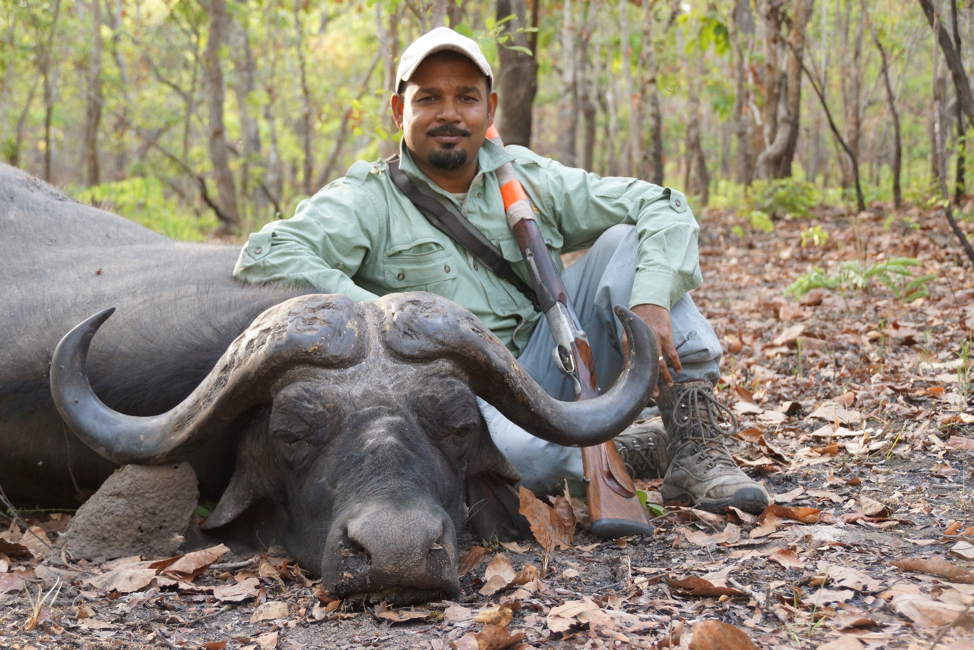
As I share my experience on hunting trophy Cape Buffalo, I must sincerely say, I do not consider myself the say-all and do-all on the topic. I have been fortunate to hunt buffalo throughout my life, since childhood. Mostly in Tanzania’s spectacular wilderness habitats. Many hunters are big on numbers and I am regretfully not inclined to it. In my world of hunting, numbers don’t matter. What count are effort, honor, respect for the animal and the overall experience.
I have a personal and professional world. They are both founded by what ‘counts’. You may not enjoy my personal world, but we will surely enjoy my professional world. In person, I push to extremes that are bound by my goals. As a professional, I push and adapt to our goals as set by you. Just like buffalo hunting, no two hunters are the same. Similarities, yes, but identical does not exist. Hunting is a very personal experience and therefore belongs to the beholder.
Before delving specifically into the trophy aspect of buffalo hunting, let me be clear about my scope of relevance on hunting in general. I have only hunted wilderness areas. I do have lots of exposure to game ranches, game farms and fenced habitats, but have only actively hunted wild habitats. I have nothing against man-managed habitats and eco-systems and feel they have a valid place in the scheme and strategy of wildlife conservation. I simply have not had a chance nor desire to experience an actual hunt in such conditions and therefore have no experience.
So what makes a trophy buffalo? There are many trains of thought and none are wrong or bad. With a rise of professional personalities, celebrity hunters and television as well as social media platforms, there has also been an increased opinion that reaches far more people than at any other time in our hunting heritage. What used to be a painstaking pride of passing lessons and skill from one to another, is seemingly now available at clicks of a button, from total strangers. What tends to happen with this trend, is adoption of an identity rather than the building of one.
Yet, our hunting heritage remains a sacred and personal experience. The more you can include these fundamental factors into your experience, the more you will get out of it. Ultimately, it’s about you. When you hunt, you connect directly with Mother Nature. Your trophy, therefore should be all about your desire and delight. Remember, this is a wilderness hunt, for which no guarantees exist and preconceived notions can deceive reality. Every opportunity is unknown and most trophies are presented and pursued in the heat of the hunt. Stay true to the hunt.
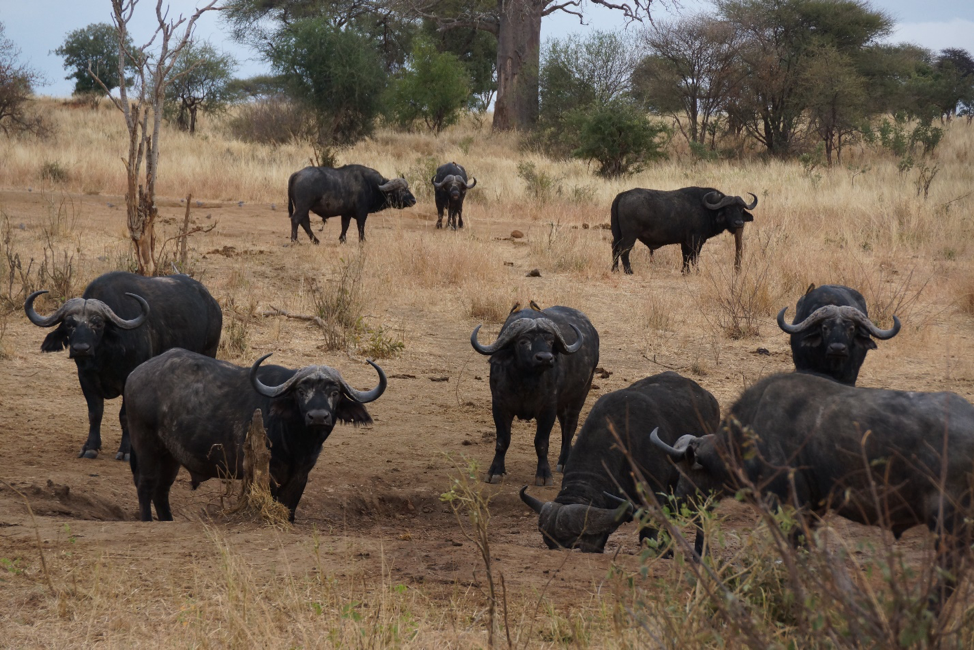
Trophy characteristics of the African Cape Buffalo
The following are common terms used in reference to Cape Buffalo trophy descriptions:
Spread
The most commonly used term, referencing the measure between the widest extremities of the horns, which are normally on the outer horn curvature. The Rowland Ward recording system uses this as its’ main measuring feature. It is determined in inches and thus the use of 40+ & 50+ as reference points. In my humble opinion, this system of measurement has led many hunters to focus on one aspect of the trophy, which has little or no bearing on the animal’s age.
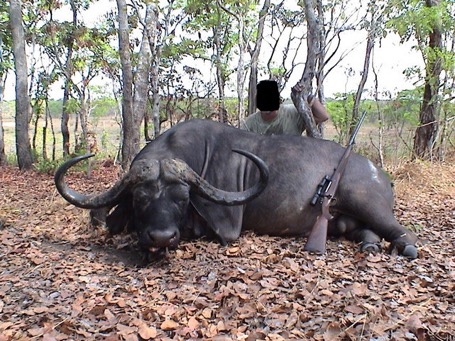
Boss
The most important factor in trophy assessment. When a hunter scans a herd or looks at a buffalo, the “bosses” are the first point of reference. Bosses are those helmet-like bases at the top of a buffalo bulls’ head, where horn growth begins. Bosses come in all shapes and sizes. The SCI system includes a measurement of the widest points of each boss, which does help on points, but establishes little of the animal’s age. They can measure anything from 10-20 inches, regardless.
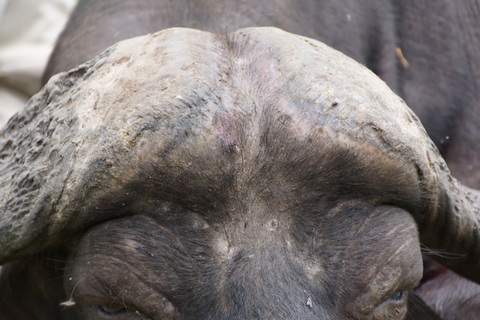
When boiled, this skull will have no boss left!
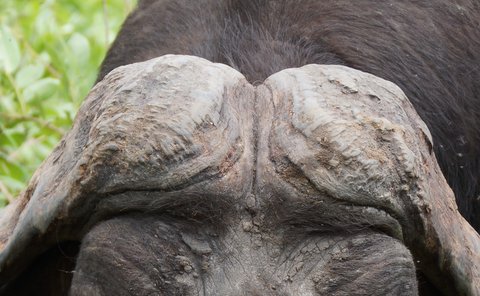
Both of the below bulls have exceptional bosses, the first (solid boss) is younger than the second (polished boss).
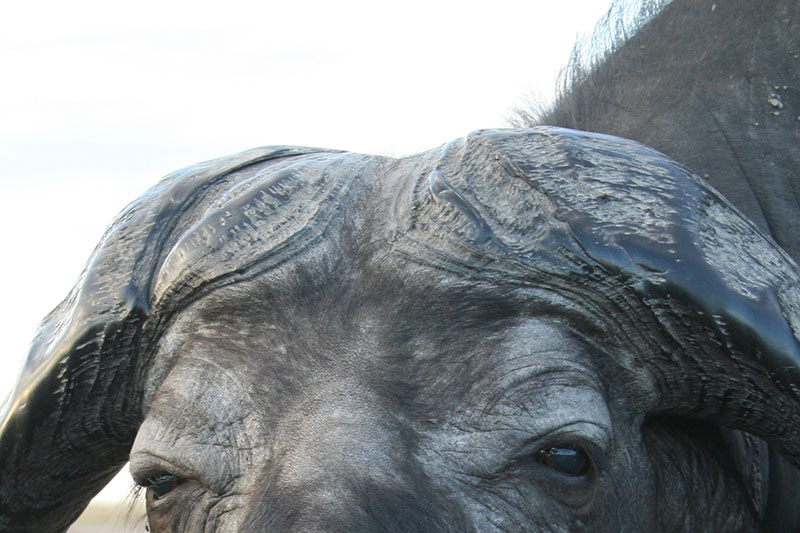
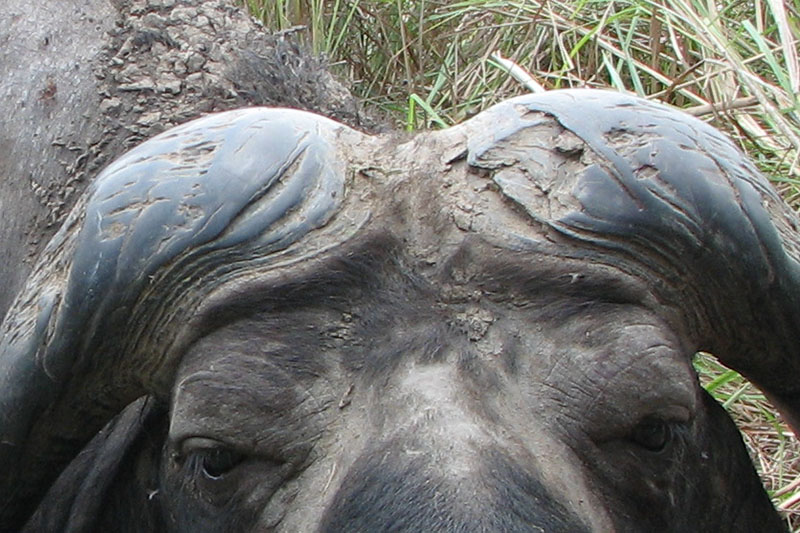
When you boil these heads, there will be no loss of horn, nor space in between horn & skull. By taking these type of buffalo, you are ensuring sustainability of the species in the area.
Drop
The downward growth of horn from the boss. Some buffalo have a deep drop while others have a gentle drop and some have very shallow drops, which are not good looking on a trophy buffalo. The general tendency is that whatever is compromised on ‘drop’ is recovered on ‘spread’. There are exceptions though.
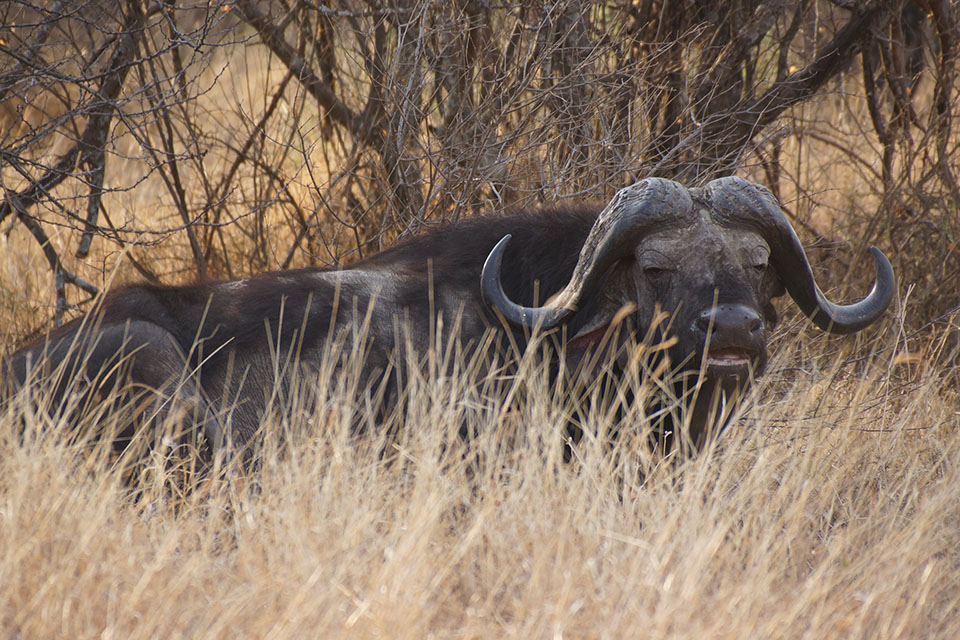
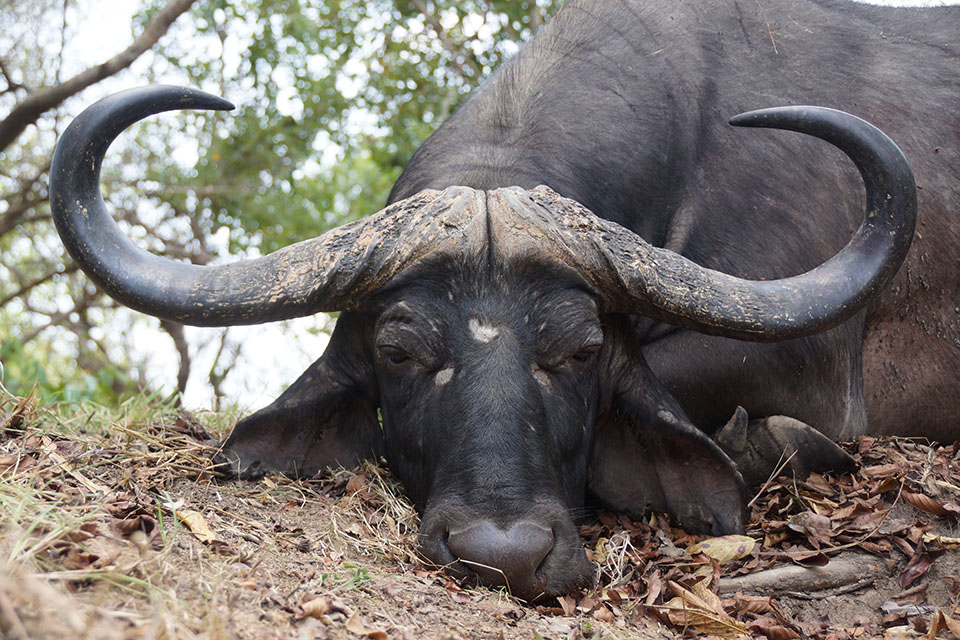
Far from the typical shape of a buffalo trophy. But whatever it sacrificed in drop, it gained in spread. He measured out at 43”! This particular buffalo was part of a group of three solitary bulls that lived secluded atop a range of hills. The other two had much more drop, but less spread.
Curl
The curl is the curvature of the horn from the drop towards the ends. Most buffalo that have a good drop, also have a good curl. Due to genes, some buffalo have much more pronounced curls than others. When a ‘curl’ does not turn back inwards towards the buffalo, it is then referred to as ‘hook’. The ends of the horn wear down with age, therefore a lot of older bulls have hooks rather than curls.
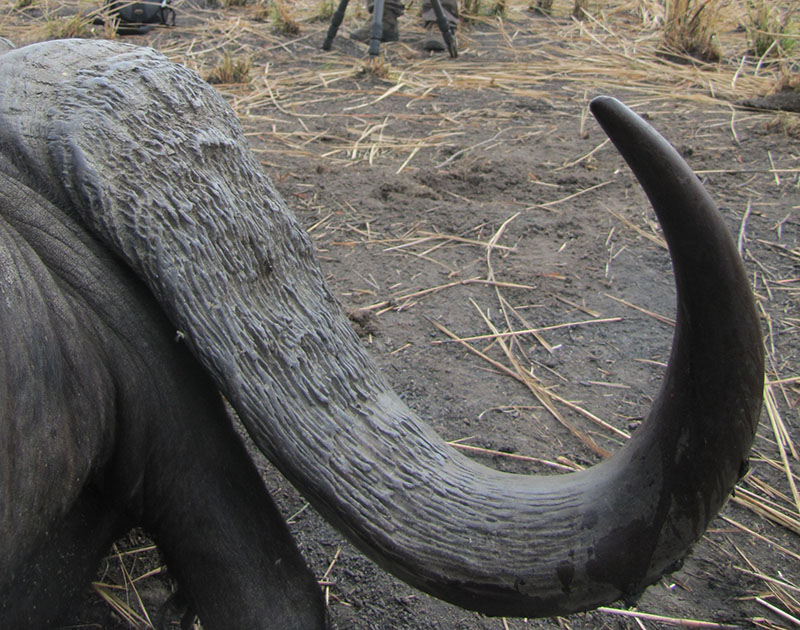
Some say a pronounced curl makes it harder for a buffalo to hook and toss you in into the air. Instead, it bangs you, running you over and pummels you into the ground. Honestly, I would rather avoid both, by shooting well & putting down the curled or hooked buffalo.
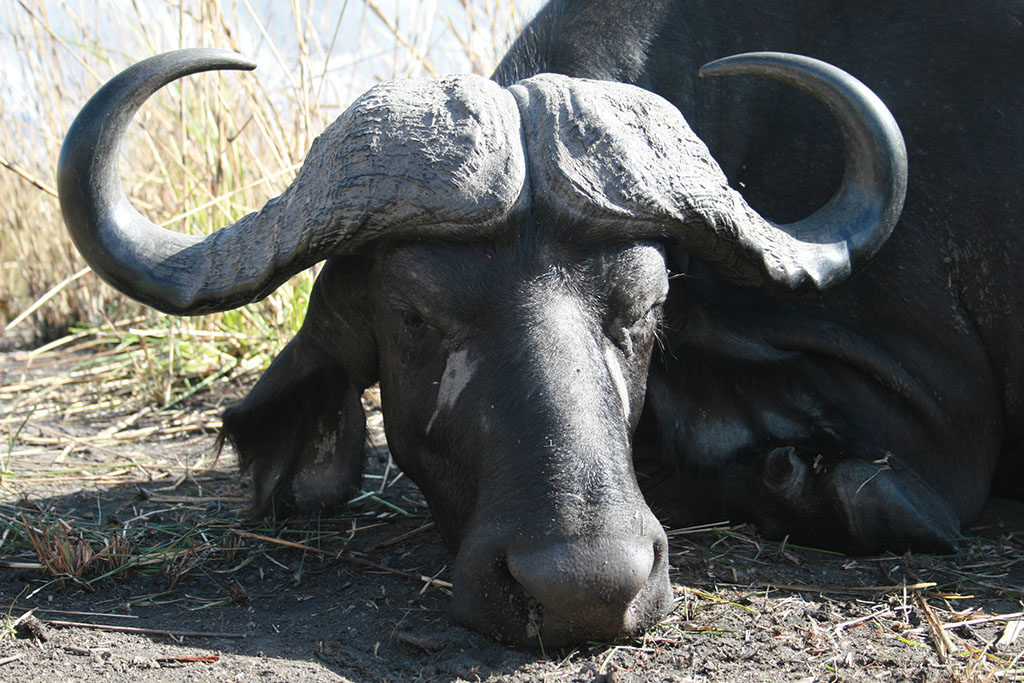
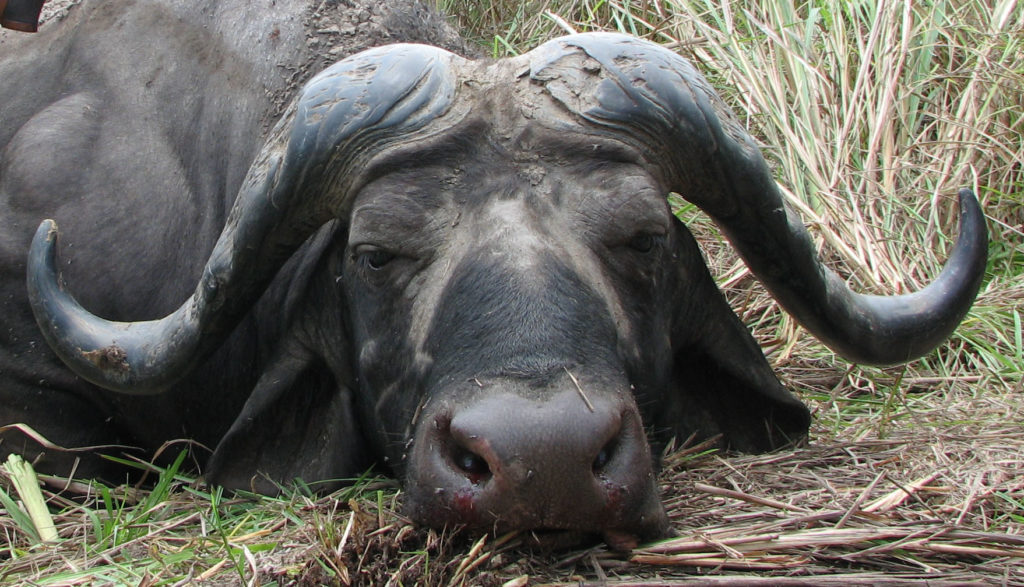
Tips
The ends of the horn growth structure are known as ‘tips’. Sharp and pointy tips are a sign of younger aged buffalo. Blunted and worn-down tips are sign of older buffalo that have put their horns to good use. Buffalo use their horn tips to stab with, to debark trees, to dig in mud and to scratch and groom themselves with.
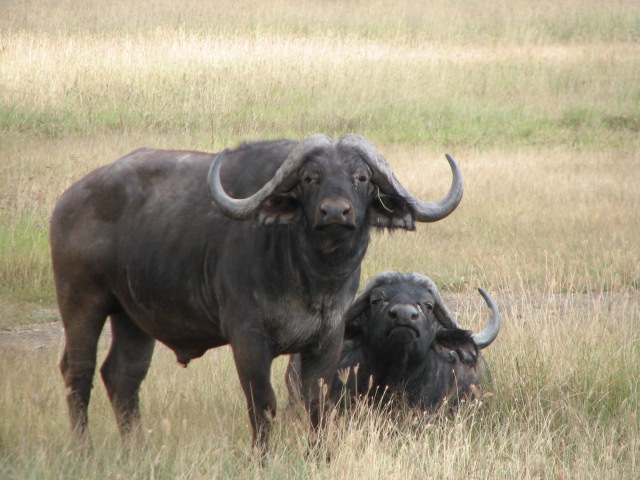
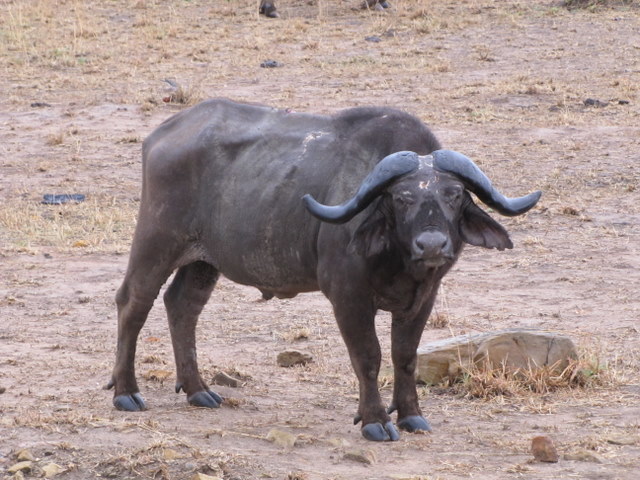
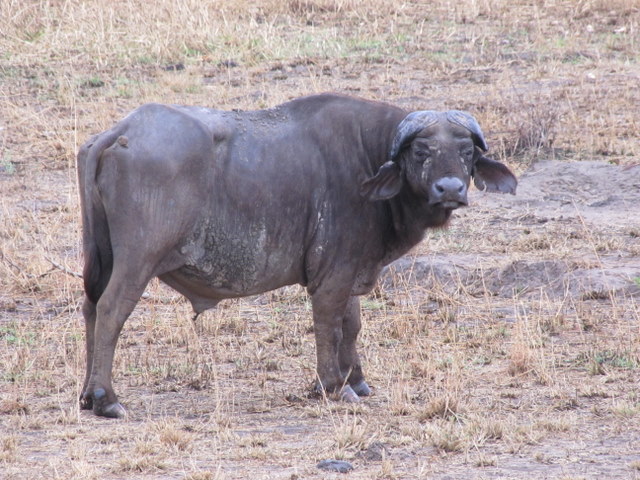
Has It All
Occasionally there will be buffalo that make a hunter say, “He has it all”. This is in reference to all of the above single features, combined. It is a rare sighting. Due to varied genetics and geographic factors, it is very seldom to find an old bull that has it all, especially in wilderness habitat. It is a matter of sheer luck. These exceptional bulls tend to score very high on the SCI measuring system, as it combines the width of both bosses and horn length curvature from tip to tip.
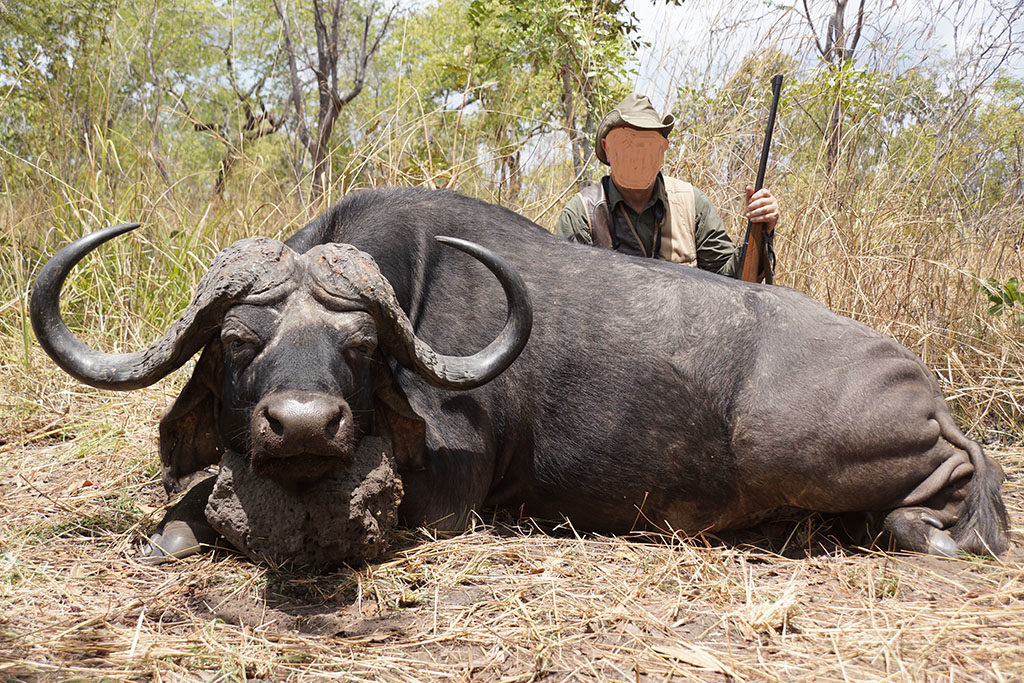
This one should have been allowed to live longer, but he was alone, far from any herds and priority was Buff.
Boiled Skulls
The images below are examples of what was mentioned about boiling of skulls:
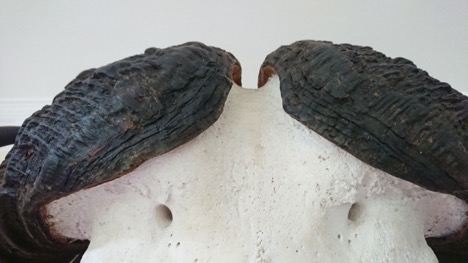
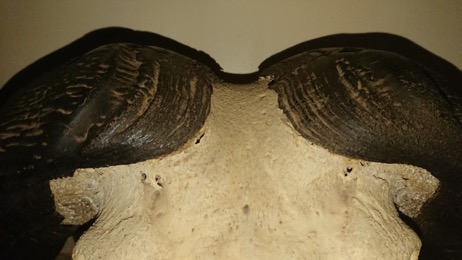
Identifying a trophy African Cape Buffalo Bull
Now that you have a good idea of a trophy buffalo, you would think there is not much else to consider on identifying one… not true. There are a number of factors and features to account. In fact, trophy judgement is a secondary process. Identifying a buffalo is primary and precedes it. Before you closely scrutinize the trophy, you will in most cases, see buffalo from afar or get glimpses through vegetation. On these occasions, you judge a buffalo using its’ body features. These features are crucial when you cannot use trophy characteristics alone.
It just may happen that lighting is not great, angle is deceiving or horns are covered in mud or something or the other simply deviates from using just horns to assess an animal. This is when body size, muscle development, neck dimensions, penis sheath, hanging testicles, posture and behavioural clues all come into play. On many buffalo hunts, you make more than one approach and this practice of truly studying the animals in a herd or group, allows the hunter to identify an individual animal amongst many. It could be a cut in the ears, a mark on the body, bulging testicles or extended dewlap… but you will pick-up something that allows you to identify it.
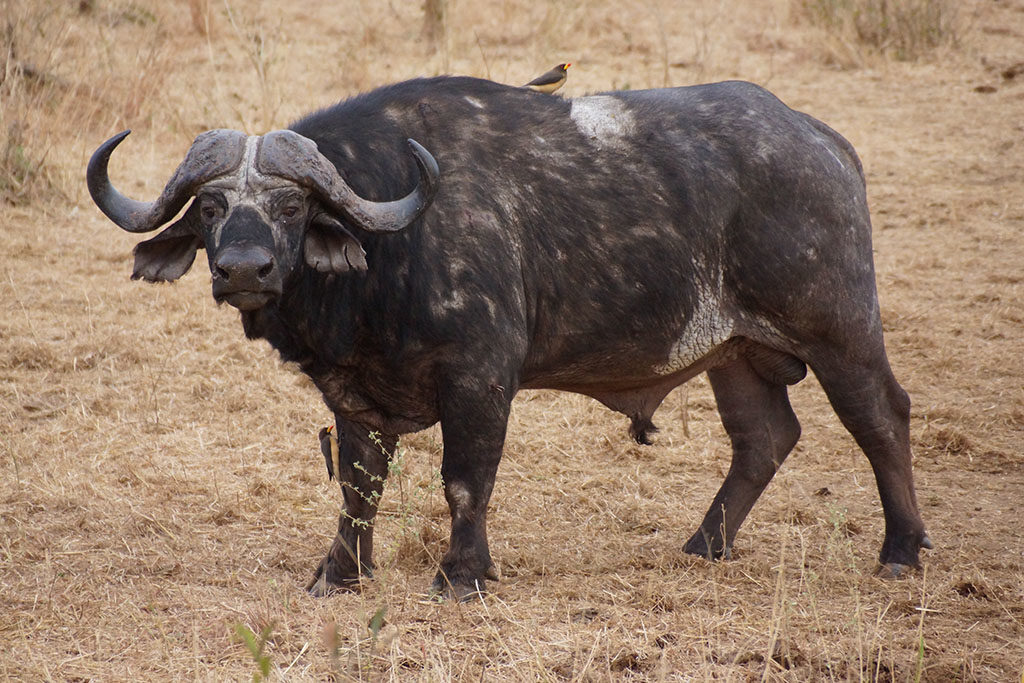

The importance of identifying animals is under rated by many. It has benefits across the board. It allows you to pick-out an animal amongst a herd or group, but also applies to solitary animals, their geographic and periodic context, which are valuable knowledge to a hunter. Wilderness hunting habitats are vast, with many unknown aspects. The more you know about the area and its wildlife, the better you’re equipped to conduct safaris with safety, success and sustainability.
Whether on a short safari, extended safari, season-long work or long-term of an area, knowing details is priceless. It is always an advantage hunting with a PH who knows the area well. With buffalo, you become highly efficient in your hunting, when you can identify an animal or a herd. Depending on supporting factors such as season and location, you can save effort and time on a particular herd when you know it is unlikely to have a suitable bull in it. So when you see your “marker” animal within a herd, you know whether to pursue or move on. The same applies to smaller groups or a solitary bull. They tend to maintain a range and if you can identify it as the one that is not yet ready to be taken, you could save an entire day of cat & mouse. This is also useful in minimizing hunting pressure on buffalo. The quality of hunting in an area is so much better when the animals are not under constant pressure. When you can approach and retreat without disturbing the animals, you are doing a world of good for animal behavior in the area. When you do take a shot, get as close as possible, make a clean killing shot. If there are other animals around, let them get away before making follow-up shots or tracking wounded game.
It can be tempting to take a ‘selfie’ or chase a herd for a scene or footage etc. Just be aware of the long term influence you have on wildlife. Respect and honor the quarry. There is the tactic of ‘running the herd’ and it can be effective. I’ve used it myself quite often. But imagine doing it over and again… animals habituate to this and extend their tolerance and safety distance over time. Similarly, with PH’s ‘calling’ buffalo. It works well, but you should not be identified as the source of the sound. If you expose yourself, you’re not tricking, but educating the animals. A good hunter must have intelligent strategy which considers impact and effects on wildlife. Only focusing on hunting goals can be detrimental to the long term sustainability of the relationship.
Trophy Hunting Scenarios
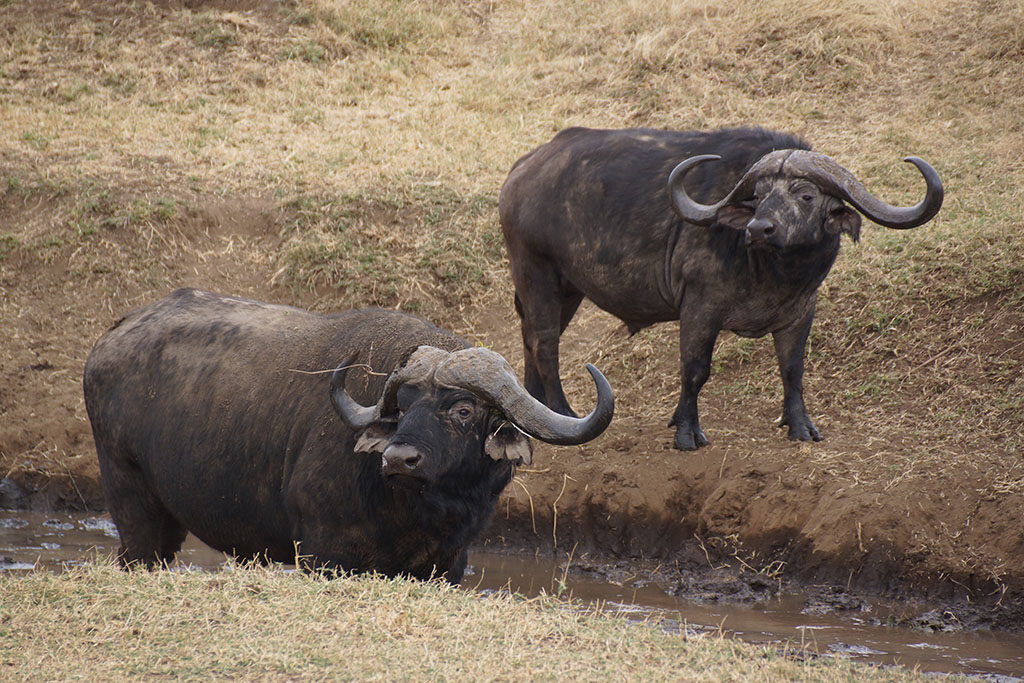
Those in a dilemma – stop thinking ‘wider’ and focus on ‘older’. The same applies to those who are misled into a choice – there is none. For the opportunist who are thinking of a ‘double’ – don’t! It would only be a double opportunity if there was two similar to the nearer on the left.
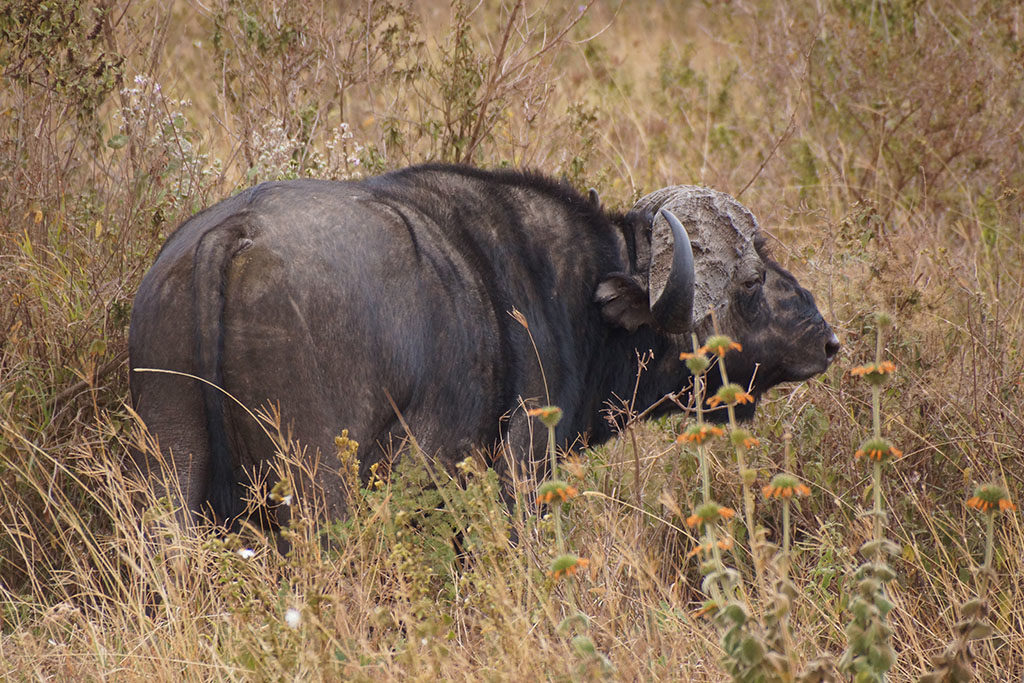
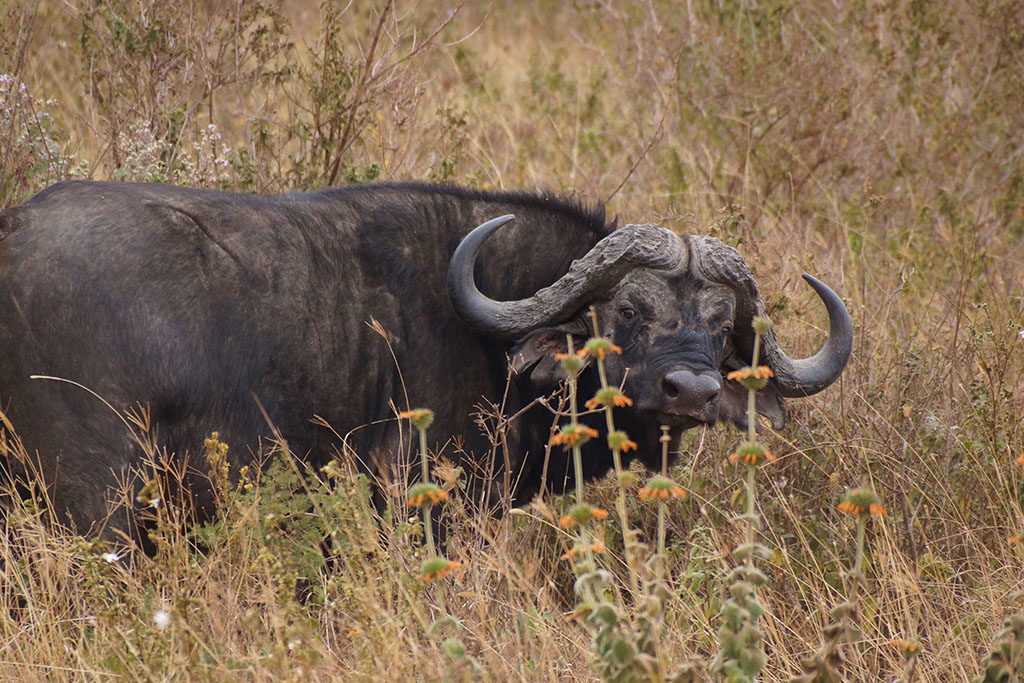
The above two are a classic sequence of images showing the importance of assessing a trophy buffalo from the sides and front.
This next sequence of buffalo are not the same animal at different ages but buffalo of a similar genetic makeup. They offer a visual on trophy development from maturity into old age. They are most likely a year older progressively from each other. Old, Older, Oldest.
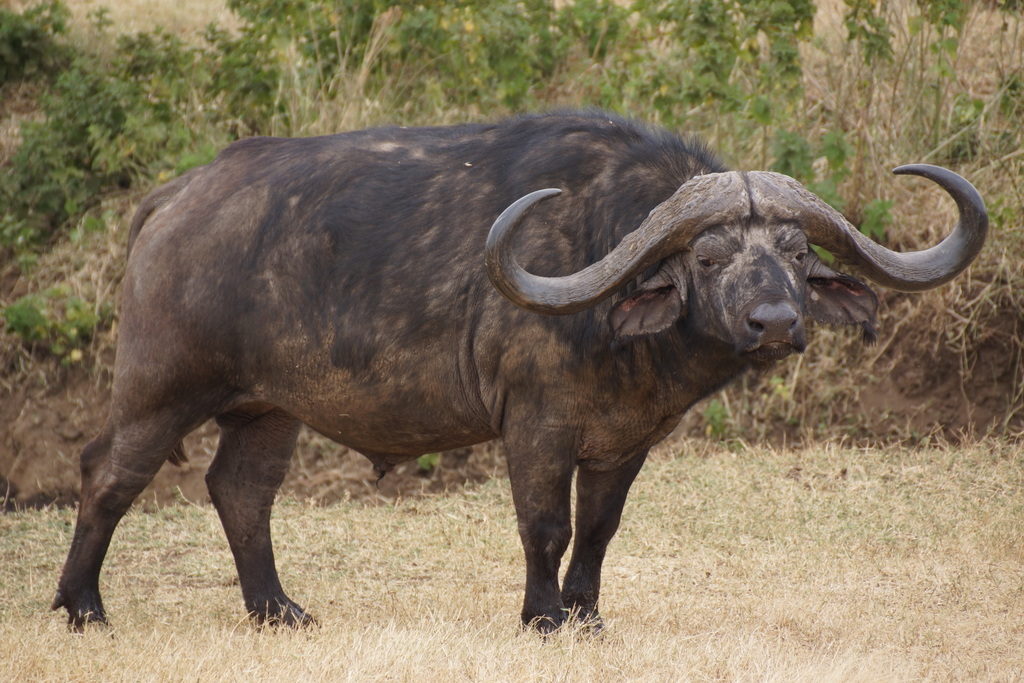
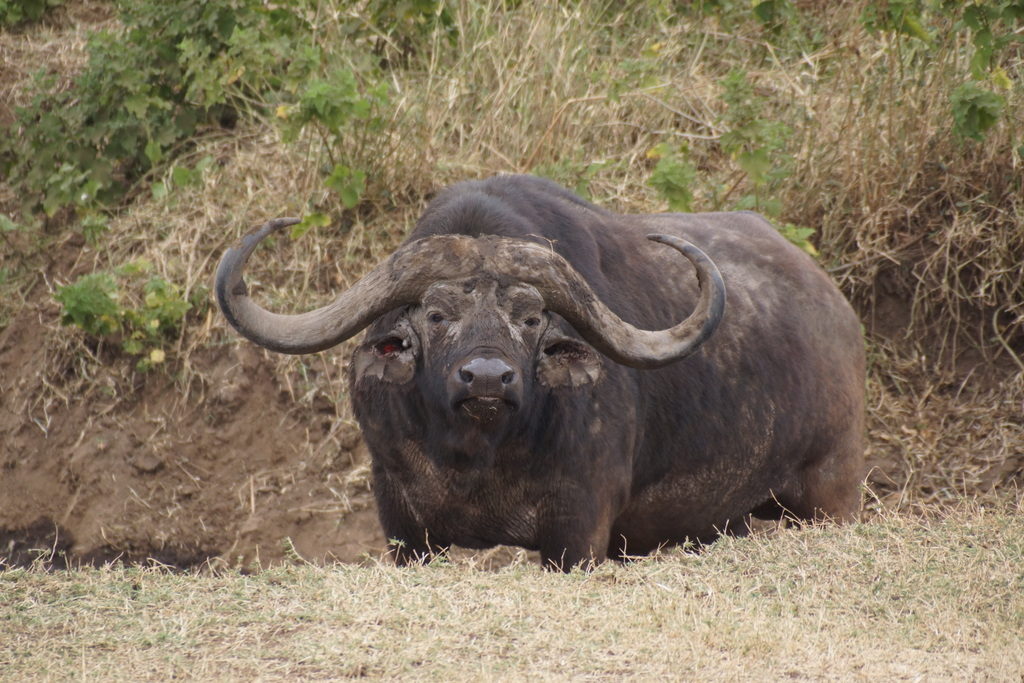
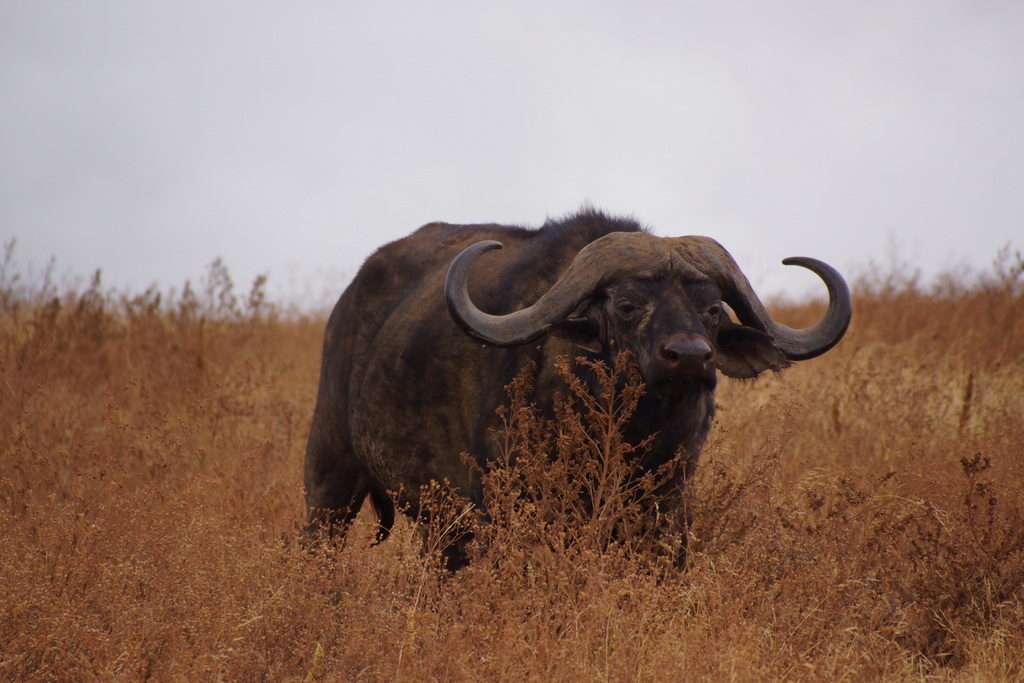
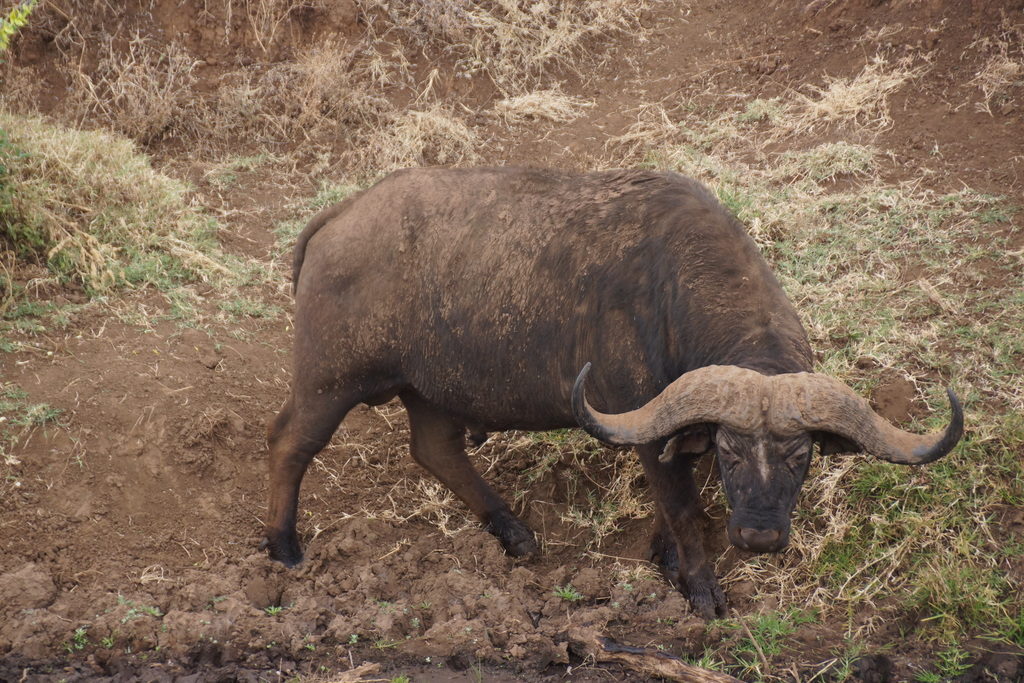
Depending on your trophy goals, you will have to consider genetic geography, species abundance and habitat preference. If you want a chance at buffalo as the above, then Maasailand is your preference. But you must sacrifice the feeling of endless, pristine wilderness habitat. Most Maasailand areas have plenty of human activity within them. Buffalo numbers are a lot less than other areas and found in pockets of habitat. It is also a very specialized hunt, especially when pursuing them in mountain forests or lowland thickets.
As mentioned previously, there are some genetic pockets in unexpected areas. These can be anywhere throughout African Cape Buffalo range. Historically though, Maasailand has some of the best buffalo genetics. The widest buffalo on record are from the Maasailand escarpment.
Once you have hunted various areas in the species range and experienced varied habitat, you can see the genetic variety more clearly. Swamps, woodlands, rolling hills, valleys, thickets, mountains and semi-arid terrains all seem to have an influence on trophy form and structure.
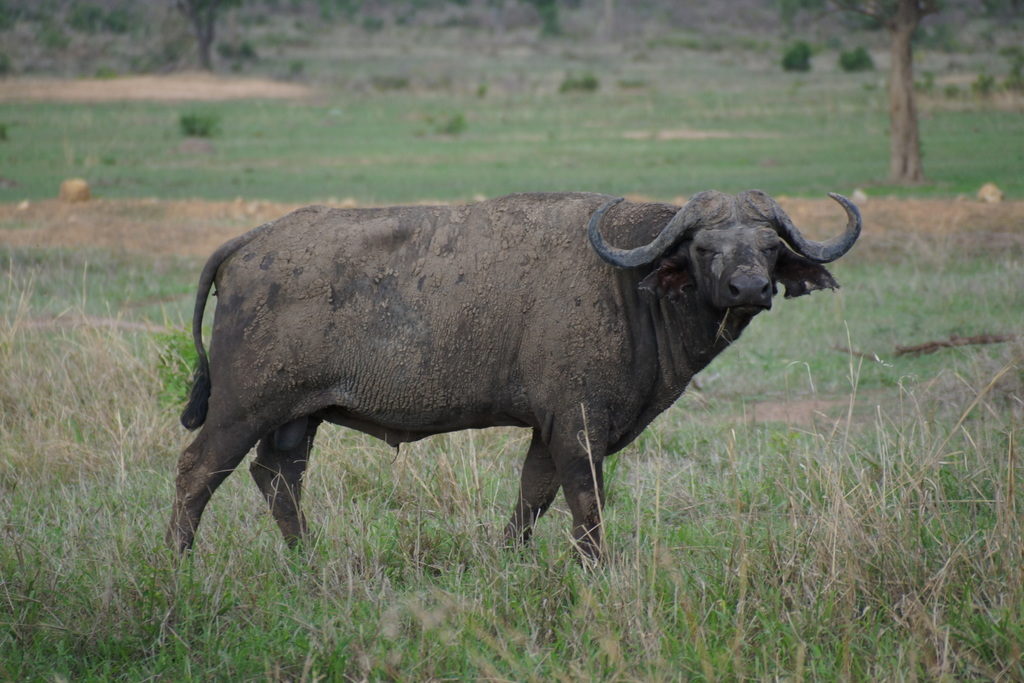
Before I end this segment, I must mention the myth of gap or space between buffalo bosses – it has little to do with age and everything to do with genetics. Bosses that grow together are an exception to the norm. Take a look at the above old bulls and you will note a gap between the bosses of anything from an inch to four inches. That is simply determined by trophy genetics. Similarly, you may find some buffalo have shorter and wider faces, while others have longer & leaner faces. This is also predominantly due to genetics.
The next segment will focus more on the “experience”, which in turn determines a lot about the actually trophy. Hopefully the content in this segment has enlightened you a little more on the trophy aspect of African Cape Buffalo hunting. For more detailed information on topics related to Buffalo Hunting, in terms of preparation, packing, ballistics and everything in general, please do refer to Craig Boddington, who has written amazing books on the subject and also produced visual material to assist any and all buffalo hunters – novice, frequent and expert.